Somehow I made it to 1PM without needing the Authenticator app on my work phone. Which means I didn’t realize I had left my work phone in my car this morning. My gratitude to the FindMy app which showed me a truth I could hardly believe.
Maybe, if the weather was bad overnight so the commute was a challenge even after a co-worker asked for one more thing before you left the house, and the coffee in your travel mug tastes good, and you’re already late, maybe Rob Zombie can finish his song before you go inside.
IOS Pet Peeve (Includes iPadOS): Processing Notifications from the Lock Screen and the Device Goes to Sleep.
#In practice, I pick up device so it wakes and shows the Lock Screen. I see a stunning number of notifications. I start swiping and tapping to manage them, and then even though I’m holding the device in front of my face, FaceID doesn’t, and the screen sleeps in mid swipe or between taps.
Now, I have to wake the device a second time, make sure FaceID happens, go the Home Screen where hopefully I’m not completely distracted by icon notifications, hope I’m pulling down from the portion of the screen that will allow me to process the notifications I was trying to process, and start again.
I need to reduce the number of notifications. Almost none of them need to be on my Lock Screen. Most of them aren’t adding value to my life. So noted.
American Dreaming by Dead Can Dance
Five stars, Would Recommend
Well, my Hogwarts Legacy level 16 character has already surpassed my previous level 20 character in terms of ability. And, I was able to defeat the Acromantula that I could not previously get past. A couple of tips I ran across have been invaluable.
Afternoon project and soundtrack:
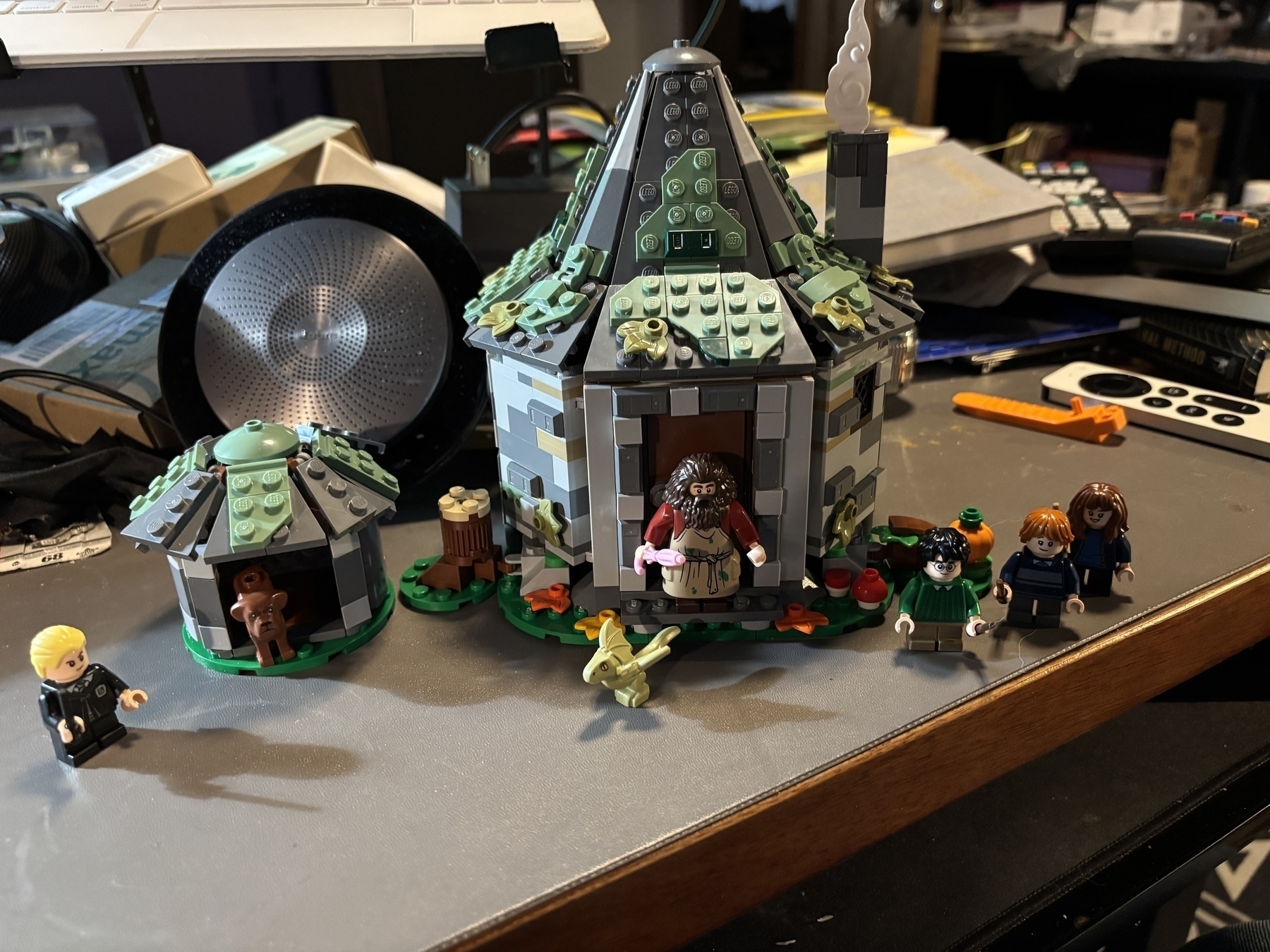
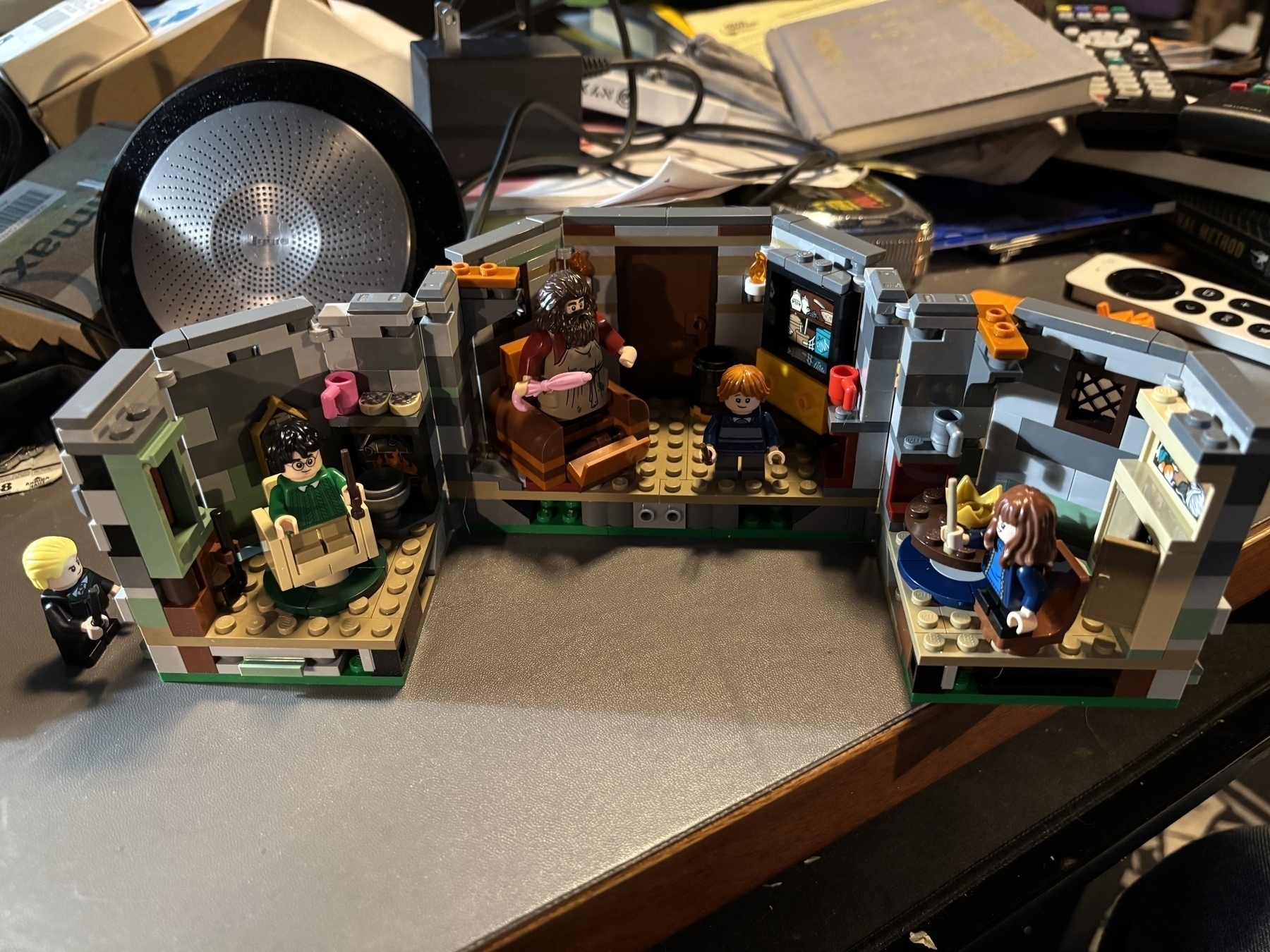
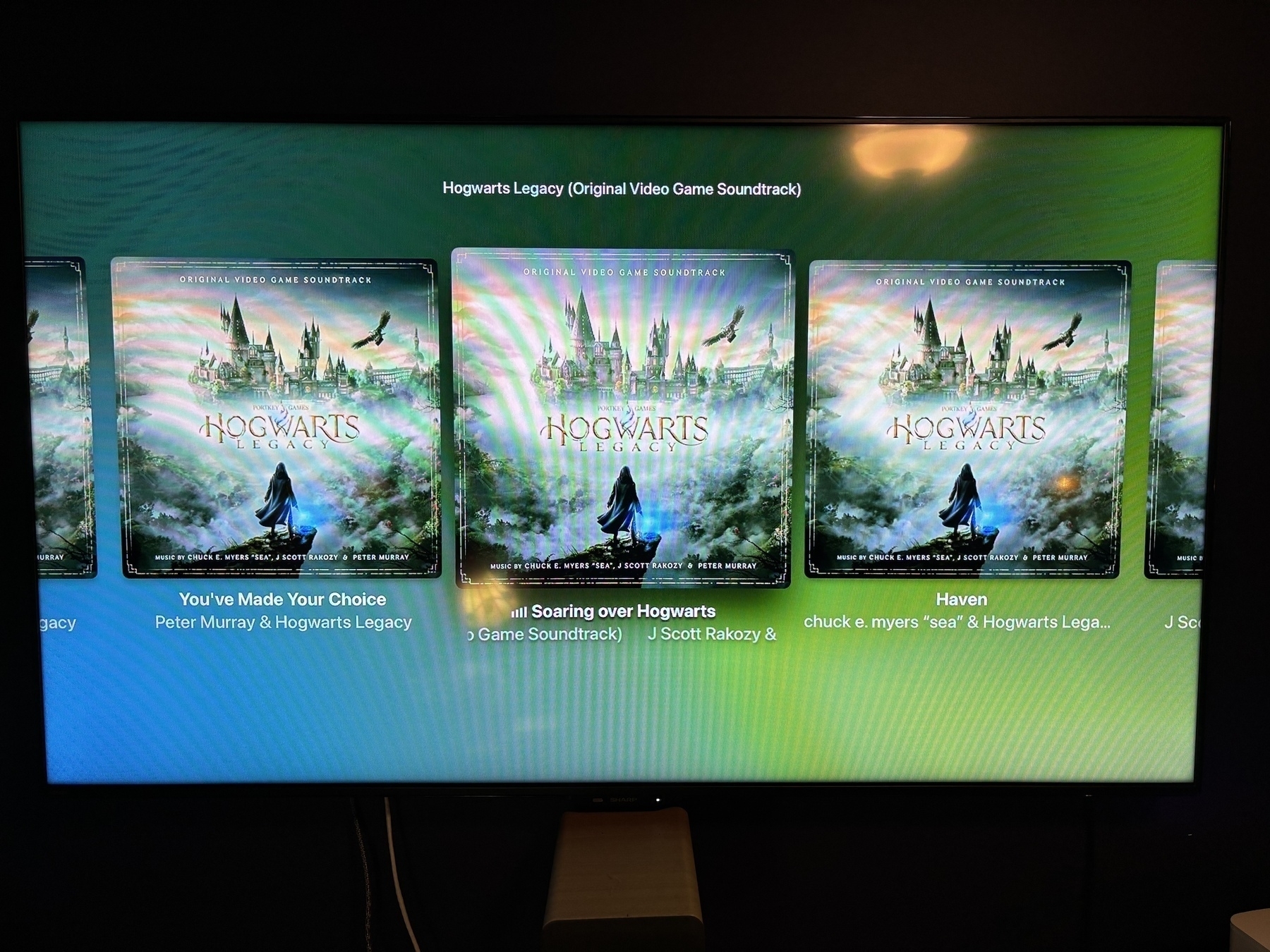
I’ve been doing technology support for three decades. It is so disappointing after all this time that sometimes what you need for an app to do what it was designed to do is to quit and restart. Not to do something special, just for the app to what its designers intended, that base functionality.
And then I spent the rest of the day in deep recovery and have spent a fair amount of time in Hogwarts Legacy starting back from the beginning, in Story Mode. Right now “the story” is more compelling and the tasks and challenges feel like they are leading somewhere. It has been fun!
Today was a day. The people came out a second time. The basement is drained and drying. It’s all over but the crying end cleaning. That was a grand I was hoping I was saving but I paid people who did a bunch of crappy work on our behalf. I’m grateful that issue is resolved for now.
The guy is here trying to drain my basement. I don’t spend time in mine, generally. It’s partially finished and mostly storage. Tonight I made the discovery of the water. Not fully flooded, but standing water in part, water had been higher at some point. Floor drain isn’t draining, etc.
The thing where I was expecting a delivery today, but actually the order I placed is scheduled to deliver in just 6 short days.
Once again, I have learned to never ever trust a tutorial for doing anything in Linux. The chances that you will be able to do what you intend to do right out of the gate are low, and inevitably you’ll need to refer to second, third and fourth sources. And maybe it works, maybe you start over.
I re-watched Madonna: Truth or Dare this week. It came out at what I feel was most likely the zenith of her career, with her Immaculate Collection and her book Sex all in popular media at once.
It was fun to see. I had forgotten there might have been any controversy around any of her performances since she has been eclipsed on a few fronts.
I was a huge fan of hers for a long time and my collection of music reflects that.
But it was a time and a place and others have filled that same place in my heart since those days.
I rewatched Rattle and Hum a few weeks ago and think about the lyrics, still. It was interesting to see even then how America and her culture were both influential, yet not living to her ideals.
I’m looking for a copy of the Depeche Mode 101 DVD.
Not sure if I have an AppleTV issue or a playlist-too-big issue. When I pick a few of my larger dynamic lists, the AppleTV becomes unresponsive for several minutes. Not an issue on my iPhone 15 streaming the same lists, but my AppleTV model is circa 2017. Only seems to be an issue since tvOS 18.
Coffee. Coffee and Tylenol. Coffee, Tylenol and Nintendo.
I need more coffee.
I opened my web browser on my work computer, and once more I have no idea what I was going to do next.
First time I’ve seen an Instax photo. About the size of a credit card. From a company event this morning.
Apologies to Tim who has no idea he is on my timeline.
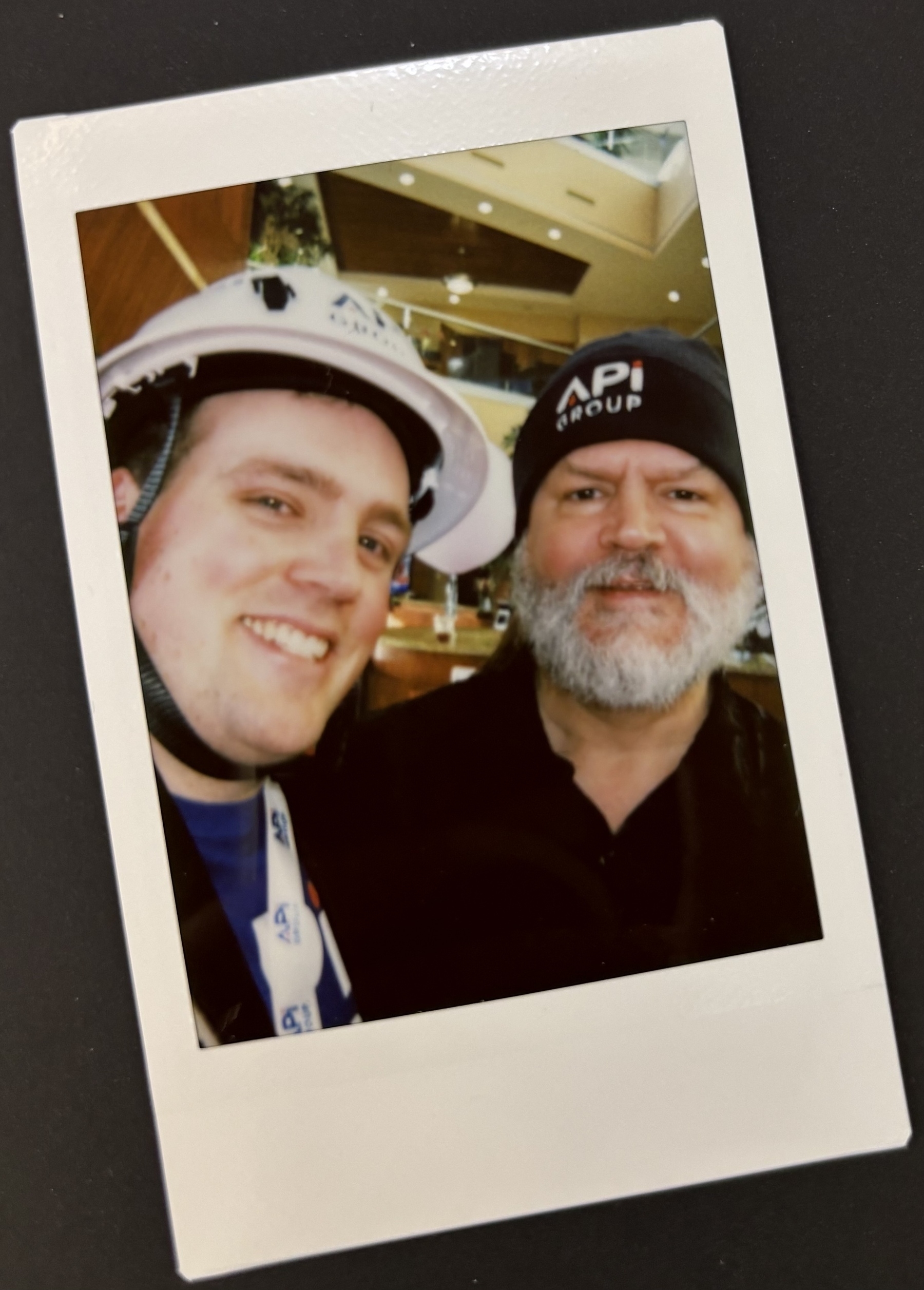
“The only resistance worth a damn is the one where you stop calculating the odds and start living your truth without reservation.”
Mike Brock /via TechDirt
I experimented today. At the soda machine I picked Lime Coke Zero. Then I saw that also I could do Cherry Coke Zero. And I thought maybe they might be two great tastes that taste great together, like cherry lime-aid from Sonic. Short answer: No. Much too sweet and bland rather than tangy.
Apple Notes has good keyboard shortcuts. However, searching for notes to link isn’t consistent. I can’t use a space character in my search, and search results do not show everything that matches search terms. So that’s a challenge I’m having setting up the cross-linking needed for Forever✱Notes.
Have I Mentioned John Philip Sousa?
#Recently, I learned that John Philip Sousa is the composer of The Liberty Bell. Many of us know this as the theme music for Monty Python’s Flying Circus.
He has a tie to my Mid-Western region of the USA, having composed a Foshay Tower March for the self-same Foshay Tower in Minneapolis. According to legend, his orchestra played it the one time at the grand opening celebration. The check from Mr. Foshay bounced, and he never played nor published the march for the rest of his life.
But the reason I researched Sousa reveals a part of my psyche I have tried to keep hidden. You see, I have John Philip Sousa ear worms. Seriously. And frequently. And Stars and Stripes Forever figures largely here, as there are many distinct sections that all come together at the end. I listened to the whole piece just a few days ago. I forgot about the Piccolo. I smiled.
You see, I needed to be able to name the terror. Then, perhaps, I can come to terms with the ear worm.
So I found the Wikipedia page. The one with all 137 of his known Marches. One by one, where there are linked audio files, I listened to the intros. Nope. Nope. Nope. Not that one either. I’m far less familiar with John Philip Sousa’s œuvre than I would have guessed. With the exception of just the two marches that my grey matter seems to adore, and the one pop culture gave to me, I thought perhaps two or three more had more familiar themes than the rest.
Anyway, my brain also loves to fire snippets of The Washington Post my way from time to time, as well.
So, which comes first? The John Philip Sousa or the dissociation?
There is one more ear worm. One in a similar vein. I know its name.
It’s not Sousa. But it is The Star Spangled Banner.
Ah, the joys of synchronization.
#I noticed earlier today that some of my Apple Music library changes weren’t showing on my Apple TV. After attempting to initiate a cloud sync, Apple Music told me there was an error and it didn’t recognize my library. What? So the fix allegedly is to turn sync off and back on. No big deal, only 42,927 items.
I was going to continue the re-rip project but instead I’m waiting to see if the re-sync to the cloud actually works. No idea how long it will take. No progress bar nor item count.
UPDATE:
I was on pins and needles for about two hours. Nothing on screen that indicates “Success,” but everything I was hoping to see synchronized appears to have done so.
I made the “iCloud Sync Status” column visible in the Songs view. Eventually I will need to look into the large number marked “Duplicate” and a not as large number marked “Ineligible” or “Removed”
One of the issues I have already mentioned is track duplication. Many albums that I have replaced with a re-rip had included one or more duplicate tracks. It feels good to clean those out. I will have gone one by one for each CD, but that does not account for items purchased from Apple or from other sources that were imported.
As an incorrigible collector, I have music from many, many sources. There is some work that will continue once the CDs are all back in. In the case of cassettes or vinyl, should I try to find this music digitally? Or, should I find a way to record these in real time?
Not going to decide today, but I know it would involve “recording” a side at a time, taking those files and separating them into tracks, possibly compressing to a lossless format, and adding meta data and cover art. Maybe after I retire? Or maybe not at all. I really do enjoy having everything easily available and potentially much more portable. No idea what the future may hold.
I am avoiding articles that include the phrase “Here’s what to expect…” because I expect a company to announce everything it is prepared to announce as soon as it is ready to do so. That is enough for me. I understand that they have advertisers to service, but I’m not participating.
I met the challenge.
Even with a lid on the cup, I managed to pour coffee onto my face and my clothing.
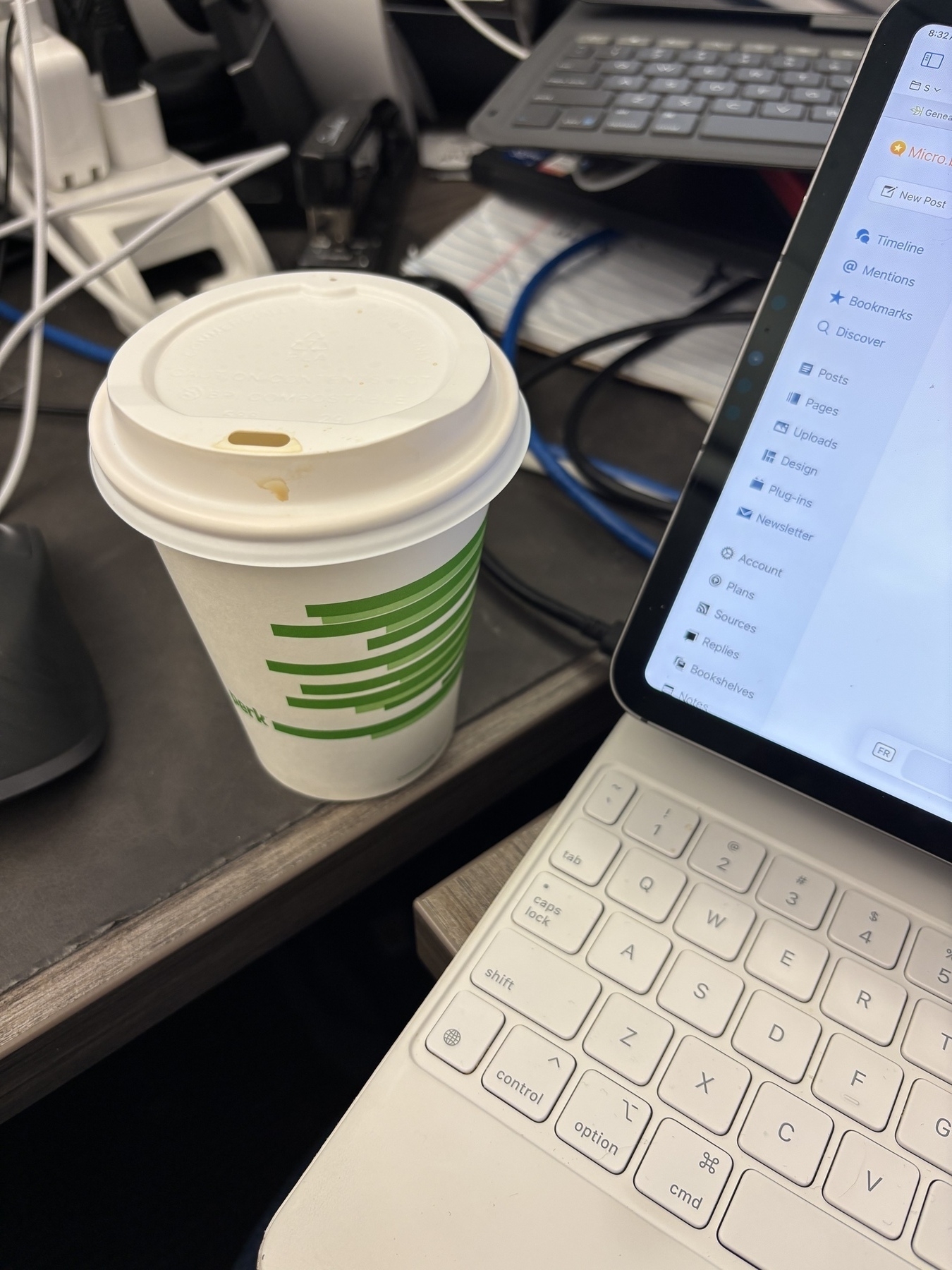
The good news is that the guitar I have is rated well for beginners—Some of the information I was looking for lead to several different discussions with similar statements by different folks.